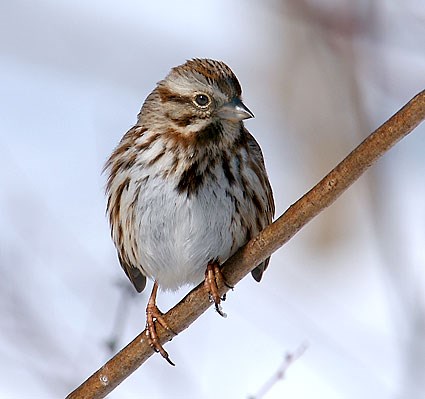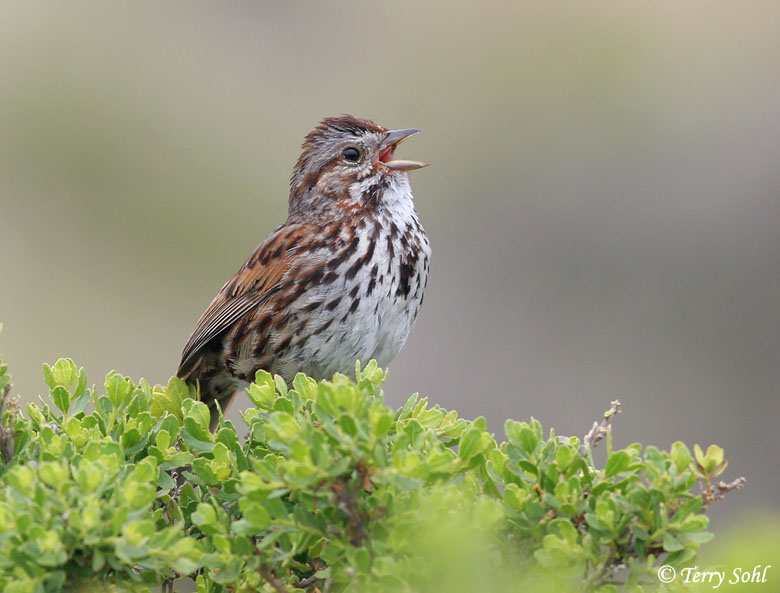
Melospiza melodia
TAXONOMY
Fringilla melodia Wilson, 1810, Philadelphia, Pennsylvania.
Thirty-eight subspecies.
OTHER COMMON NAMES
French: Bruant chanteur; German: Singammer; Spanish: Gorriуn
Cantor.
PHYSICAL CHARACTERISTICS
5–7 in (12–17 cm); 0.67–1.5 oz (19–42 g). Song sparrows are
medium to large sized sparrows with a long, round tail. The
head is brown to light rusty with paler median crown stripe,
grayish stripe above the eye, conspicuous brown malar stripes, a
brown mottled back, and heavily streaked breast with a dark
central breast spot. Sexes are alike. Juveniles have brown crowns,
are heavily streaked below, and are generally more buff in color
than adults. This species is highly variable geographically.
DISTRIBUTION
Breed from the Aleutian Islands, along the southern coast of
Alaska, east across southern Nunavut, northern Ontario, and
central Quebec to southwest Newfoundland, and south to
Georgia, Missouri, Nebraska, New Mexico, Arizona, and California.
Locally resident in Baja California and central Mexico.
Resident in Alaska and along the Pacific coast, but most northern-
breeding birds migrate in winter to southern Florida, the
Gulf Coast, northern Mexico, and southern Baja California.
HABITAT
Generally found in open brushy habitats, often near ponds,
streams, or marshes. In winter, they are found in brush and
woodland edge.
BEHAVIOR
Generally stay low in vegetation, but they often perch conspicuously
in a tree, bush, or on top of a weed when singing. In
flight they appear to pump the tail, and they hop or run on the
ground. They defend territories with chases and fights. In winter,
they can be found in loose flocks that often contain other
species of sparrows.
FEEDING ECOLOGY AND DIET
In summer, they eat primarily insects and other invertebrates,
but in winter they eat mostly seeds. Song sparrows feed on the
ground or by picking food from vegetation.
REPRODUCTIVE BIOLOGY
Socially monogamous. The nest is a bulky cup of leaves, strips
of bark, grass, and other plants, commonly placed on the
ground among grasses, low in a bush, or rarely in a cavity.
They usually lay three to six eggs. Nesting takes place from
late February (in the southern parts of their range) into August.
Incubation takes 10–14 days, and young fledge in 7–14
days. Both parents feed the young.
CONSERVATION STATUS
Not threatened.
SIGNIFICANCE TO HUMANS
None known.
Photo Gallery of - Song sparrow




 Animalia Life
Animalia Life